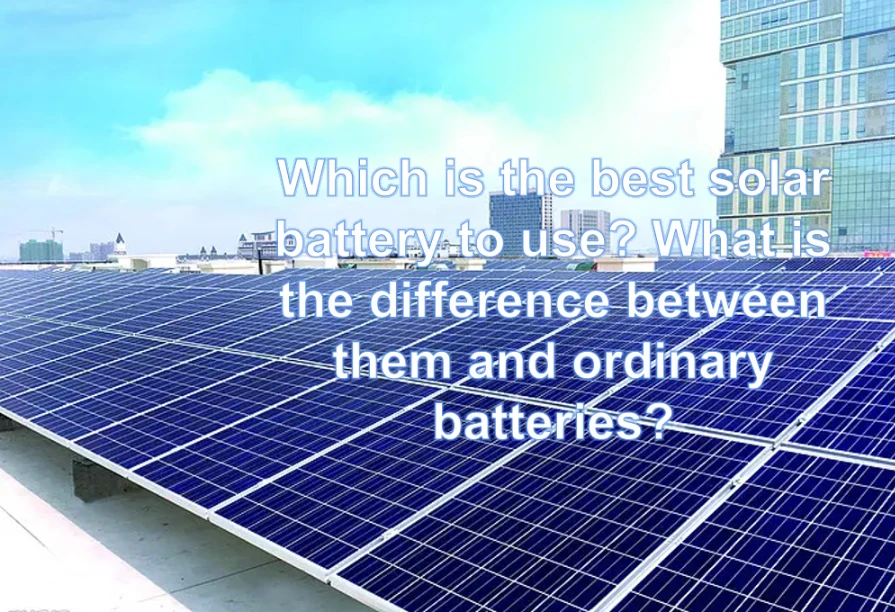
The battery is one of the main components of the photovoltaic power station, which is used for energy storage, that is, the electrical energy provided by the solar battery is converted into chemical energy and stored in it. Generally speaking, the battery is charged by the solar array during the day, and the load is powered by the battery at night. Today we talk about which kind of solar battery is better. What is the difference with ordinary batteries?
1. What is the solar battery?
A power generating system known as a photovoltaic off-grid power generation system turns solar energy into electrical energy by using the photoelectric effect principle. It usually consists of solar cell components, controllers, battery packs, and DC/AC inverters. Solar battery is used in solar photovoltaic power generation, and its main task is to store energy to ensure load power consumption at night or in cloudy and rainy days.
2. Which solar battery is better to use?
The battery is the main accessory in the solar power supply system. From the cost structure of the energy storage system, the cost of the battery module accounts for about 60%, and the service life of the energy storage battery is lower than that of the solar module. The average service life of the solar module is 25 years. The average lifespan of the energy storage battery is 5-8 years, and it needs to be replaced regularly, which increases the cost of use.
At present, the widely used solar batteries are mainly lead-acid maintenance-free batteries and gel batteries. These two battery types are ideal for dependable solar energy because of their built-in free maintenance features and qualities that generate less environmental contamination. Power systems, especially unattended workstations.
3. The difference between solar batteries and ordinary batteries
- Some use lead-acid batteries for solar energy, and some use better performance lithium batteries.
- Because of the different charging/discharging methods, the requirements for solar cells and ordinary lead-acid batteries are also different:
- Charging: The electric energy of the solar cell comes from the sun, but the current for charging the battery with sunlight is very small, so the area of the polar plate is not required to be high;
- Discharge: solar cells generally supply low-power electrical appliances such as street lights, so the discharge current is also very small;
- Due to the small charge and discharge current, thin plate technology is not required;
- Solar cells require a long float life and cycle times, so they are generally liquid-rich batteries, while ordinary batteries are poor liquid.
The above is a detailed introduction of which kind of solar battery is good for, I believe everyone has a certain understanding. In terms of advantages, JYC solar batteries have good deep cycle capability and good overcharge and overdischarge capabilities. It can also be applied to different environmental requirements, such as batteries that can be used normally under different conditions such as high altitude, high temperature, and low temperature.



